Kay Sargent, Sr. Principal, Director of WorkPlace, HOK | Tech-enabled environments & doing what you love | 31:51
Transcript
DA: Hi, I’m David Abrams, and I want to welcome you to this edition of the Tenant Experience Network podcast. I want to welcome today’s guest Kay Sargent, Senior Principal, Director of WorkPlace at HOK, helping clients redefine how, when, and where their people work. In this episode, we will learn about Kay’s journey to her current position at HOK, where she applies her expertise in workplace design and strategy issues to create thoughtful solutions for her clients. We will tap into her thinking around what it takes to become an expert and doing what you love as one of her keys to success. Her views on creating tech-enabled environments, and get a glimpse to what is top of mind for Kay, as she continues to navigate through new challenges and emerging opportunities. We’re excited to be sharing this podcast with you, so make sure to subscribe so you never miss an episode of the Tenant Experience Network. Now I’d like to welcome Kay to the show. Hey Kay, really glad you could be with us today.
KS: Thanks, happy to be here.
DA: Awesome, so let’s start with your journey to your current role as Senior Principal, Director of WorkPlace at HOK. How did you get started? Sort of walk me through that.
KS: Well, okay, so I’ve been a practicing designer for 35 years, and I started literally drawing plans, et cetera, when I was 10, like my parents used to have parties and I would be in the back room drawing house plans for everybody and bringing them out, you know, to show them, et cetera. But a practicing designer for 35 years. And, you know, I’ve worked at a variety of architectural firms, worked in a brief period for a manufacturer, and also worked for Lendlease, a major developer, to kind of get some different viewpoints and some different sides of the industry. But for the last four years, have really kind of been at HOK. You know, I think I hit a point when I turned 50. It’s like, alright, I got, you know, 10 to 15 years left and there were three or four things that were important to me, working at a firm that was multidisciplined, working at a firm that was truly international, working at a firm that was in multiple sectors, that wasn’t siloed, and working on a firm that was committed to thought leadership and really being a leader in the industry. I feel very passionate at this point in my career that it’s about the legacy that we’re leaving and joining the next generation. So joined HOK four years ago as Director of WorkPlace, and myself and Gordon Wright really need a team of people who deliver about 55 million square feet of workplace for clients that have multiple projects in multiple locations. I think we’re doing projects in about 44 different cities or countries right now. So that’s kind of what I do.
DA: All right, pretty impressive. I had an opportunity to sort of scan through your career resume and I did see the Canadian connections. So I know you spent some time at Technion, which of course-
KS: Hey, yeah, you betcha.
DA: How was that?
KS: It was great, I loved it, I loved Canada. Toronto is actually one of my favorite cities. I think it is, you know, they talk about New York being a melting pot, but I think Toronto is such a diverse culture and diverse population, but they all kind of have kept their own unique identities. I think it’s absolutely just an incredible city, loved it. And working in that capacity gave me an opportunity just to see things from a different perspective. I mean, I worked in major architectural firms for years, in that role when I was Director of WorkPlace and A & D for Technion, I got to go to all the major architectural firms in Canada, in the US, and even internationally. And that gave me a very different perspective about what was happening in our industry. And so when I decided to come back on the side of architecture design, I was even more passionate about the fact that we, as a profession, need to control what we’re doing, where we’re going, and how we go forward.
DA: Right, so why do you think you’re so uniquely suited for this opportunity? Are there any skills that, you know, really have helped you to be successful along the way?
KS: Curiosity.
DA: Okay.
KS: Yeah, I think the thing that, I don’t want to say I get bored easily, but when I get into something, I really get into it, right? And I immerse myself, and in my 35 year career, I have morphed into many different things so that when ADA came out, I was an ADA expert. I designed a lot of spaces for the federal government, did a lot of surveys and assessments. I was very involved in security design, master planning, you know, have done a lot with workplace strategy for years and years, really kind of looked at it. I think there is a curiosity that I have, and there’s so much for us to learn, and I’ve never stopped wanting to know more and to dive into those things and to tackle that. So I would say it’s my curiosity that is probably my biggest asset.
DA: You know, really interesting. As we continue along our journey of bringing on guests like yourself to our program, it’s interesting to see how curiosity is becoming a reoccurring theme amongst professionals. And I think you’re right, it’s a great skill, and it really does bode well, given that we really need to be lifelong learners, without that zest and that curiosity, you know, it would be pretty hard to continue down a path that is always evolving.
KS: Yeah well thank God life keeps bringing us new challenges. So, you know, you kind of have to adapt and to survive. And I think it’s an essential skill set, quite frankly.
DA: Absolutely. Any advice for someone wanting to follow a similar path?
KS: Yeah, I mean, first of all, I had a great conversation about a year ago, a student called me and said, “Hey, I’m writing a paper on something that I want to become an expert in healthcare design. How do I do that for this paper?” And I said, “Well, you practice for, you know, 15, 20 years, you know, put in those 10,000 hours, right, that they say it takes me to be an expert at anything. You make some mistakes, you have a lot of successes. You experiment, you learn, you study. I mean, you can’t just become an expert of something overnight. And I think you have to have the patience, and the endurance, and be willing to work hard, and be willing to admit what you don’t know, and be willing to have that curiosity drive you and really kind of dig into something. And it helps if you’re passionate about what it is you’re doing.” You know, I have five kids, I get a tremendous amount of grief from my children, which is their job, right, to give their mother grief. But, you know, I have a tremendous amount of grief from my kids for always working every night, it’s like, “You’re always on the computer.” Or, you know, even while we’re watching movies, you’re over there, you know, working, or weekends or, you know, whatever, on vacations. And I finally started to bother me at one point. And then finally, I realized, if you’re doing what you love, is it really working? Like, I don’t have to be doing this right now, but I’m doing it because I’m curious, and I want to be doing it, I’m passionate about it. So am I really working? Am I? Or am I just doing what I love? And so maybe that just makes me feel better about being a workaholic, but I, you know.
DA: Well, I definitely share the passion side of the equation with you, and I think given this new work-life balance and, you know, working from everywhere, it is hard to find that balance. And I think you can suggest it’s all about passion, but I think we have to curb that passionate time, ’cause I know for one, you know, I’ll be down at my desk at 7:30 or eight o’clock in the morning, and I’ll realize it’s seven o’clock at night, and I barely got up, and that’s not good either, so.
KS: No, it’s not, and I think everybody is starting to experience that now. And I think that’s, you know, there’s some negative side effects of working from home. You know, one of them is I kind of feel like every day is “Groundhog Day”, right? You know, like that movie where it’s like, didn’t I do? Like, I’ve done the same thing, literally even the same thing, even, for the last five days in a row, like it’s just, everything is just kind of blurring together. And then you come up to, you know, what is a Friday? Like a Friday doesn’t feel the same anymore. Even a Saturday or Sunday when you’re, you know, whatever. So yeah, this is presenting a new challenge, I think, for all of us.
DA: So as a great segue, not that there’s only one challenge we’re all facing, but what’s the biggest challenge you’re currently experiencing, and how do you think you’ll overcome it?
KS: Adapting. You know, I think we all need to adapt right now to this new scenario. I think all of our clients need to adapt. I think our industry. I think the design and real estate industry is really antiquated, and we need to change and adapt radically going forward if we want to truly come out of this better. I don’t think the way we deliver space, occupy space, you know, is really kept pace as it should. And if, in COVID time, we just focus, you know, people panic and go backwards, or people just address the COVID issue, we’re missing an opportunity. In fact, I think in December of last year, I wrote an article called “Is this our Kodak moment?” And again, this was before COVID. COVID’s made it even worse. And the challenge, I think, what makes this, you know, we’ve always had to adapt, that’s nothing new, it’s the speed at which we’re having to adapt now. And now let’s add on top of that, we don’t know how to adapt. Every single client is asking us, “How do we need to adapt?” And we are in the middle of an evolving situation. I think, look, we’re always in the middle of an evolving situation. Life is always evolving, but this situation has so many unknowns, and we do a lot of future casting, we do a lot of thought leadership, and I can look into my crystal ball, and I can tell you, you know, the things I think we need to address, what is likely to happen, you know, what will probably happen with all these companies that think work from home is going to be the golden answer for them. We can predict, and I can tell you, I mean, there’s a history here of where we think this is going to go. But there are still a lot of unknowns that are making adapting challenging, because you don’t know how to adapt.
DA: I think that’s the number one issue that most of us are facing, both professionally and personally, particularly those of us that are planners. And if we have that personality where we are, you know, always thinking ahead, we’re in a place right now where you really need to take one day at a time, one month at a time. And even though we might plan on what that might look like, we don’t know for sure, you know, how it will turn out. And I think as professionals that really, when your clients are coming to you and asking for your advice, I’m just wondering that certainly, you know, puts us into an interesting place because we can only provide so much counsel on what we really don’t know.
KS: Yes it does. And I think what happened is a lot of people early on tried to give people very specific answers ’cause they wanted to be the person that ’em the answer. And I think there were a lot of missteps, you know, there’s a whole lot of people that probably, you know, six foot circles and thought they were good and call it a day, or threw up plastic shields and thought that they were good and call it a day based on some preliminary advice. And you know, I think what we don’t realize is that every action has a reaction or a side effect, and you need to think about those side effects. And most of us, you know, a lot of people jumped, and you know, we kind of cautioned, I mean, We were one of the firms early on that said, when our clients would come to us and said, “What do we need to do to get the office ready?” It’s like, “Well why do you need to go back?” And you know, as a designer who designs workplaces, I should be, “Ah, you know, I’ll absolutely redesign your workplace so you can be back.” But the real question and the right question for our clients is what is driving this? What are the concerns? Can you address all the issues, and think long and hard before you spend money on what you think are solutions or go backwards to 1970? You know, we are basically telling our clients, you need to take a breath. You need to pause for a minute, take a breath, and really think about what this is. Because what you do right now, you know, we’re going to have some economic challenges after this. And if people spent money on the wrong things early on, they could find themselves in an uncomfortable situation.
DA: I couldn’t agree more. I also think those that came out with, you know, very big statements about, you know, “We’re now going to be a digitally remote working company forever.” I think that was also equally wrong because I think that those of us that really have thought long and hard about this situation recognize that this has been an experiment. And yes, it has worked. We have enabled our workforce to still be productive and still be effective. But I think we’re quickly learning, and I know I can speak from personal experience, this is not easy. It is not easy to run a company, build a company, and sustain a company 100% remote, so-
KS: Well, let me pick up on that topic for a minute. So, you know, the thing that we’re hearing is every, “Wow, we’re surprised by the fact that people have been able to work from home, and we’re surprised that people have been productive.” Okay, those are probably two of the things that we’ve heard, and now we’re going to make it so that everybody does it, like, let’s just continue it. Why do we need the office again? Number one, I’m not sure what rock everybody has been living under that, you know, I mean, we’ve been working from home for, what, 30 years now, right? Like I work in an airport 90% of the time. Working at home is a luxury, you know, but I’m just surprised at how many people have actually never did it, and were actually surprised it could, okay? So I find that intriguing. Number two, we’ve been productive. We’re running on adrenaline. Anybody can do something for a few months, especially when you’re afraid of losing your job. That adrenaline is running out. And what you described in the beginning of this webcast, people sitting stagnantly all day long, it is starting to have an impact on emotional health, mental health, and our physical health that, you know, if companies think that they can just keep doing nothing, and just send everybody home, and you know, you’re good, you survived, that’s a misnomer. There are companies that have put in rigorous programs. IBM, Cap One, Bank of America. And they learned that there were mixed successes. In some cases, it was so successful it eroded their culture. In other ones, they didn’t ideate or collaborate as much as they wanted to, but there’s a precedent here. And the precedent is beware.
DA: So Kay, with all of that being said, if I was to give you an extra $100,000 of budget right now, how would you spend it and why?
KS: I would spend it on developing a remote work program for my employees, and doing an assessment of who’s well suited, who isn’t, why, and how do I give them the support, and what managers are going to be able to manage by performance and not presence and training? And I would put it into reassessing some of my work environments. I think workspace is going to shift. I think we should have less dedicated individual work points, but they should be better, smarter ones, but you can do that over time. And I think we’re going to have to deal with tech-enabling spaces. So creating less touchpoints, spaces that are either voice-activated, motion-controlled, app-controlled devices, I’d put some of those things in there. I would enhance my cleaning and maybe my HVAC in my workplace, $100,000 just going to do that, but I’m going to stretch it. And I would rework my conference areas to be less around formal tables and more around gathering, ideation, co-creation, and innovation.
DA: Well, I certainly think you’re stretching that $100,000, that’s going to be really working hard. I can’t wait to see what the, I got to find that $100,000 and send it your way, just to see if we can make that all happen.
KS: Well it’s for three people, right?
DA: Exactly, I should have said, those are Canadian dollars. That would have changed your answer.
KS: Oh, got it.
DA: Are there any resources, mentors, colleagues, books that have really helped you along your journey? No one gets there alone, and I’m just curious as to what have been some of the influences in your life so far?
KS: I think it’s an interesting question. I think all my colleagues, especially the younger ones who challenge and inspire us every single day. You know, I started off, and I said earlier on, and I really mean this, I am truly, maybe it’s the mom in me, but I really believe we have a responsibility to think about what the legacy is and what we are leaving the next generation, and to kind of embrace their innovation, their creativity. I believe in cross-mentoring, right, we can learn as much from them. You know, we might have the experience, et cetera, but they have the capabilities, know-how, and, you know, they’re going to be taking over. So I think the younger generations really inspires me and gives me hope. And I think a lot of people in our industry, and I’ve gotten very, very involved in our professional associations. And I think it’s really, really important to do that. And so all of those people that are involved, whether it’s a or IFMA, or ASID, or IIDA, you know, getting involved in those associations and the friends and the colleagues that I have met, you know, I mean, there are people I met 20 years ago, and spent a weekend with at a planning session that I still consider friends. And every time I, you know, I might see him once a year, and the clients who have inspired me to want to do better, and put their trust in us.
DA: Right, awesome. Can you share any details about something new that you’re working on or thinking about that our listeners would find interesting?
KS: Yeah, two things. One, before COVID, we had spent the better part of, you know, a year or two, really focusing in on neurodiversity, and the topic of neurodiversity, and how do we design spaces? You know, look, I have to be honest, as a designer, we always say that the spaces that we design can have a positive impact on the individuals that are in them, and I 1000% believe that. However, that also means that I have to admit they can have a negative impact. And we are designing spaces today that are not as inclusive as they should be. And I absolutely believe that there is a science to design and no choice is random. It’s not about what you’d like, it’s about what works for you. And so we’ve spent a lot of time really digging into that topic to create spaces that are more inclusive for people. And I think one of the things we’ve realized is when you design a space to benefit the extreme, you really benefit the mean, everybody benefits from that. And I think now in COVID time, in COVID era, we are living in a period where everybody has a heightened sensitivity. So a lot of that research we’ve done about neurodiversity really can be applied to how do we create spaces that make people feel more comfortable? And then I think the second thing that we’re doing specifically more around COVID is, you know, we’ve done a… We have immersed ourselves, willingly or not, into COVID, and have, you know, had to really dive deep into all of this stuff. And I think the other thing though, is when you think about where do we come out, and we are encouraging our clients not only to address what they need to for COVID, but beyond. And so this notion of return to the office we believe is flawed. Number one, why do you want to return to something that wasn’t working before, right? Were we really addressing climate change or environmental sustainability, or burnout, or stress, or employee engagement, or the commute, or any of those things? No, not holistically. And number two, it’s not an office anymore. Like if I could take the notion of an office and throw it away, I would. We need to create an ecosystem of options. Whether it’s, I might work from home two or three days, I might work at a co-working space, or a hub, or a spoke, or outpost for my company, and then the central office might become the new innovation center or engagement center, and those things are designed with intense purpose in mind so that it’s compelling enough that I want to go there. If everything is just watered down and is average, then what is compelling enough to make me want to go to any one of these spaces, right? And so it’s about creating this ecosystem of options that really empower people to find the right space that’s right for them. So we’re flushing out those concepts a lot, and really thinking about what wasn’t working before that we need to address, and what is this new model emerging that we believe is more sustainable going forward?
DA: Listen, COVID has been awful, awful for so many people, and there’s no, I hate the expression, you know, is there a silver lining, but there is going to be some positive outcome as a result of this. And I think that, you know, just what you described, you know, how we’re going to reimagine the workplace and its role within the ecosystem, all the different places that you can be during the course of your day, and how you’re interacting, and what the value and the benefit is. I think that’s an amazing process now to be going through, and there will be some phenomenal outcomes as the result of it. It is unfortunate that COVID had to be the catalyst towards that, or accelerate the path towards that. But nevertheless, that is where we are. If you could have one superpower, what would it be and why?
KS: Okay, well, you know, actually, this is one of my favorite questions, I can’t believe you asked me that question. I used to always say that if I could have a super power, it would be that I could freeze time so I could catch up because I never, ever, ever felt like I had enough time. Like, I didn’t have enough time to read everything I wanted to read, I didn’t have enough time to do everything I wanted to do. I’d never have enough time to spend it with what I want to do. But in this COVID era, I feel like that’s almost what’s happened, right? Like, I mean, I used to travel 90% of my time. I was supposed to be traveling, I think I was going to be in 10 different cities in Europe and China and Asia in the month of March, and I was still arguing in the beginning of March that I needed to go, right, when the company was like, “Nope, nobody nobody’s traveling. We’re all staying home.” It’s like, “No, no, no, no, no, I got to go,” whatever. I will probably be one of the last people that actually comes out of this because now I’ve gotten in this whole routine of not traveling, but I kind of feel like time has almost frozen. It’s so surreal. And so I’ve had lots of time to read some of those things, et cetera. But I mean, it’s like, you know, not enough, and then probably way too much, right? Like I just want a little balance.
DA: Right, it’s gone from one extreme to the other, but I think-
KS: So that’s the super power I would have said that I wanted, but now that I kind of feel like I’ve gotten that, I’m not sure I want that one anymore.
DA: Right, but it’s freezing time. But for everybody else, not necessarily for you, ’cause you spoke about also being able to play catch up, and I get that sometimes. And I also get that, you know, sometimes it feels like everything is moving so quickly. And where does the day go? You know, I’ve been down to my office literally for 12 hours, and then you’re right, other times it just feels like everything is moving so slowly and taking so much longer, so it is odd, so that’s a neat superpower. I’ve not heard that one before, but I like it. So what are you curious about? I mean, we spoke about curiosity at the very beginning, but what else are you curious about right now? Or what’s got you thinking differently in light of current circumstances? Or is it everything? I mean, and that could be the answer.
KS: Well, I’m actually trying not to think about something too much because it’s bothering me, but I feel like the middle is disappearing, that we’re living in a world where it’s one side or the other in the extremes. And it’s not just in politics, where it is probably exemplified, but it’s everything. You know, every issue, you’re either on one side, you’re on the right side or the wrong side. And depending on what you believe, you know, different people believe, you know, what your wrong side is my right side. Maybe it’s my age, maybe it’s what I’ve lived through, maybe it’s that I, you know, I feel like there are things we don’t necessarily control or don’t necessarily understand, but I live in the gray. There’s a lot of grays, things aren’t as simple. And if you don’t have any gray, you don’t have any middle, you can’t come together and compromise. I mean, early on, like with our clients, a lot of people were like, well just everybody work from home, or just everybody come to the office. It’s not a binary choice. You know, again, if we believe the answer is in the gray, that maybe it’s a little bit of both. And I think for a lot of the issues that we are facing as a country, somehow we’ve just encamped ourselves in these polar opposite opinions, and the middle is gone. And when the middle is gone, you cannot compromise, and you cannot come to, you know, an understanding, and we need to embrace positivity. We need to embrace a can-do attitude. We need to embrace that we may not always be right, but we have to respect each other and we have to be open to what other people are thinking. And somehow that those notions just seem to be gone, and-
DA: It seems that we don’t spend enough time looking at what we have in common versus what we have that is different, or what separates us. And I think you raise an interesting point.
KS: Yeah, and do you really want to to live in a world where everybody is exactly like you?
DA: I don’t think so, no. And that doesn’t mean that things that we have in common can’t still also, you know, make us unique, even though we might have them in common, we still might bring different perspectives to the table, so.
KS: Yeah.
DA: You know, some, some life learning here as well, and thanks for sharing that. Is there anything that you wish you had known when you first started out?
KS: Yeah. That life is unpredictable. I don’t think if my 20-year-old self were to look at me today, I don’t think I could have imagined that I would be where I was. And I, for, you know, multiple things, you know, personal life, professional life, the journeys that we take, the things that we’ve lived through. Yet, when you’re younger, you know, you kind of have this, okay, this is, what’s going to happen, this is how my life is going to go, and you map it all out. And I think, you know, when you become a partner with somebody, when you go into life, it’s a leap of faith that you’re taking. And you need to surround yourself with people that you trust, that you want to, you don’t know where life is going to go, but you’re jumping off a cliff backwards and blindfolded, but you know that the people that you’re jumping off that cliff with are going to be there for you. And that’s what’s important, that you can count on those people. You cannot define exactly what your life is going to be. It is just too unpredictable, even people that have a fairly traditional life. You know, I think most of them will acknowledge that there were twists and turns in it that they could not predict, and so I think I would’ve been a lot less rigid about, nope, this is what has happen, and much more go with where things take you.
DA: Well, we’re certainly in a period of time that that attitude and that philosophy is essential. There’s just too much we don’t know, and as we talked about even before the program, you know, hard to really plan what is yet to be determined. And I think there’s great opportunity ahead of us and lots of still unfold. I’m really glad that you could join us on the program today and share some of your thinking. I think the space that you’re in is really exciting and certainly there is a lot to still figure out going forward. I’m going to continue to watch what it is that you’re saying and what you’re doing very closely, because I think that those that are really entrenched in the design process of what workspace looks like are going to be pretty influential in helping determine the new way forward. So I can’t wait to see what that looks like and to continue to connect with you and listen in on the conversations that you’re having. You know, for us Tenant Experience, it’s just super important, we’re very passionate about it. And I think that our worlds definitely coexist, and we’ll continue to find each other-
KS: Absolutely.
DA: As we continue to move forward.
KS: Perfect, well, thank you very much for having me, I really appreciate it. We can probably talk for hours and hours and hours, but maybe we’ll pick up again in a few months and we’ll see where we are, and if we’re still in this same era, or if we have evolved, and how.
DA: I love it, part two, we’ve already laid the groundwork for it. I look forward to it.
KS: Yeah, you got it.
DA: Thanks so much.
KS: No problem.
DA: Okay, take care. I want to thank Kay Sargent for joining us on today’s podcast and for sharing her journey from early beginnings, working at Technion, a Canadian success story, to now being a mentor and thought leader at HOK. Great learning for all of our listeners and an opportunity to gain insights into what it takes to build a successful career. Please be sure to tune in again for future discussions with leading professionals and industry experts who all have something to say about experience in the build world, and the impact that technology is having on the largest asset class in the world, commercial real estate. If you, or someone you know would like to be a guest on a future episode, please reach out to me directly at david@hiloapp.com. And until our next episode, I wish you all continued success in building community where you work or live. Thank you.
- September 14, 2020
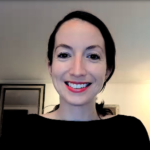
Jen Tindle | Chief Comic Relief Officer | AllAboutCRE.com | All about CRE and CRE technology
Season 5 / Episode 2 / 41:42
In this episode we learn that Jen’s latest project, allaboutcre.com, is an educational platform that builds on her love of learning. She shares some great insights into what the CRE industry needs to be thinking about over the next 3 to 5 years to continue to be successful, as well as her thoughts on how building tech stacks are evolving.
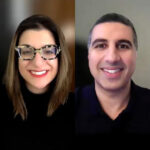
Nadine Ezzie & Ryan Elazari | Co-hosts of CRE Unplugged | Innovating from the streets to the skyline
Season 5 / Episode 1 / 37:35
In this episode, Nadine and Ryan share what led them to collaborate as hosts on a new podcast, the aptly named CRE Unplugged — Innovating from the streets to the skyline. They have a lot of passion to go with their ambitious mission to not only be informative and educational but to add a welcome dose of humour as well.
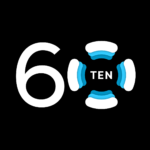
Celebrating 60 Conversations on TEN
Hard to believe that it’s been over 3 years since we launched the Tenant Experience Network (TEN) podcast as a way to connect with people at a time when we all felt isolated. Host and HILO Co-founder and CEO, David Abrams, has had the opportunity to interview some amazing people from leading CRE and Proptech companies, and in real-time, share what’s really happening in buildings and communities across North America. David wanted the program to provide a true pulse on what was actually going on in the industry, across all asset classes, without being sensational or polarizing, as is often found in the media.
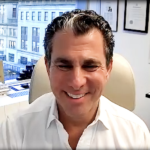
Peter Riguardi | Chairman & President, New York Region | JLL | Lessons in selling CRE in NYC
Season 4 / Episode 15 / 28:35
In this episode, Peter says he seeing an increase in people coming back to the workplace and occupiers using the office to competitively attract talent. He has also noticed a significant push to the best office buildings, regardless of their location. With 460 million square feet of office space in NYC, only time will tell how much space use will have to change.
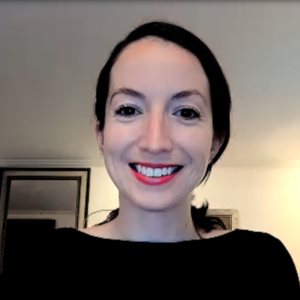
Jen Tindle | Chief Comic Relief Officer | AllAboutCRE.com | All about CRE and CRE technology
Season 5 / Episode 2 / 41:42
In this episode we learn that Jen’s latest project, allaboutcre.com, is an educational platform that builds on her love of learning. She shares some great insights into what the CRE industry needs to be thinking about over the next 3 to 5 years to continue to be successful, as well as her thoughts on how building tech stacks are evolving.
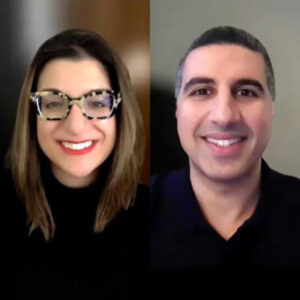
Nadine Ezzie & Ryan Elazari | Co-hosts of CRE Unplugged | Innovating from the streets to the skyline
Season 5 / Episode 1 / 37:35
In this episode, Nadine and Ryan share what led them to collaborate as hosts on a new podcast, the aptly named CRE Unplugged — Innovating from the streets to the skyline. They have a lot of passion to go with their ambitious mission to not only be informative and educational but to add a welcome dose of humour as well.
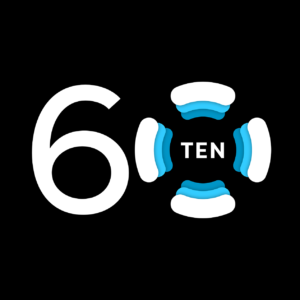
Celebrating 60 Conversations on TEN
Hard to believe that it’s been over 3 years since we launched the Tenant Experience Network (TEN) podcast as a way to connect with people at a time when we all felt isolated. Host and HILO Co-founder and CEO, David Abrams, has had the opportunity to interview some amazing people from leading CRE and Proptech companies, and in real-time, share what’s really happening in buildings and communities across North America. David wanted the program to provide a true pulse on what was actually going on in the industry, across all asset classes, without being sensational or polarizing, as is often found in the media.
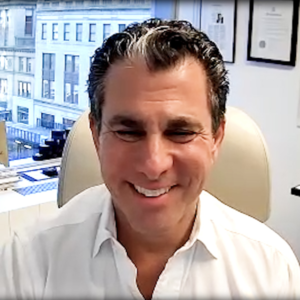
Peter Riguardi | Chairman & President, New York Region | JLL | Lessons in selling CRE in NYC
Season 4 / Episode 15 / 28:35
In this episode, Peter says he seeing an increase in people coming back to the workplace and occupiers using the office to competitively attract talent. He has also noticed a significant push to the best office buildings, regardless of their location. With 460 million square feet of office space in NYC, only time will tell how much space use will have to change.